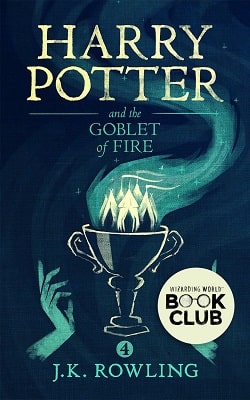ICONOSTASIS (ICON-SCREEN)—A wall of icons with a specific layout that separates the nave from the sanctuary in an Eastern Orthodox church.
IZBA—A peasant’s house, small and made of wood, often with carved embellishments. The plural is izby.
KOKOSHNIK—A Russian headdress. There are many styles of kokoshniki, depending on the locale and the era. Generally the word refers to the closed headdress worn by married women, though maidens also wore headdresses, open in back, or sometimes just headbands, that revealed their hair. The wearing of kokoshniki was limited to the nobility. The more common form of head covering for a medieval Russian woman was a headscarf or kerchief.
KREMLIN—A fortified complex at the center of a Russian city. Although modern English usage has adopted the word kremlin to refer solely to the most famous example, the Moscow Kremlin, there are actually kremlins to be found in most historic Russian cities. Originally, all of Moscow lay within its kremlin proper; over time, the city spread beyond its walls.
KUPAVNA—An actual fourteenth-century Russian town, located about fourteen miles east of Moscow. Today it forms part of the greater Moscow metropolitan area.
KVAS—A fermented beverage made from rye bread.
LESNAYA ZEMLYA—Literally, “Land of the Forest.” Vasya, Sasha, and Olga’s home village, the location for much of the action of The Bear and the Nightingale, referenced multiple times in The Girl in the Tower.
LITTLE BROTHER—English rendering of the Russian endearment bratishka. Can be applied to both older and younger siblings.
LITTLE SISTER—English rendering of the Russian endearment sestryonka. Can be applied to both older and younger siblings.
MASLENITSA—Derived from the Russian word maslo, butter, Maslenitsa was originally a pagan feast to mark the end of winter, but eventually it was adopted into the Orthodox calendar as the great feast before the beginning of Lent (roughly equivalent to Carnival in the West). All animal products in the house were eaten before the feast began, and during the holiday, people baked round cakes (symbolizing the newborn sun) with the last of their butter and oil. Modern-day Maslenitsa lasts a week. In The Girl in the Tower, the festival lasts three days. The last day of Maslenitsa is called the Day of Forgiveness. Traditionally, if you go on that day to someone you have wronged and beg forgiveness, that person has to grant it.
MATYUSHKA—Literally, “little mother,” a term of endearment.
MEAD—Honey wine, made by fermenting a solution of honey and water.
METROPOLITAN—A high official in the Orthodox church. In the middle ages, the Metropolitan of the church of the Rus’ was the highest Orthodox authority in Russia and was appointed by the Byzantine Patriarch.
MONASTERY OF THE ARCHANGEL—The monastery’s full name was Aleksei’s Archangel Michael Monastery; it was more familiarly known as the Chudov Monastery, from the Russian word chudo, miracle. It was dedicated to the miracle of the Archangel Michael at Colossae, where the angel purportedly gave the power of speech to a mute girl. It was founded in 1358 by Metropolitan Aleksei.
MOSCOW (RUSSIAN: MOSKVA)—Currently the capital of the modern Russian Federation, Moscow was founded in the twelfth century by Prince Yury Dolgoruki. Long eclipsed by cities such as Vladimir, Tver, Suzdal, and Kiev, Moscow rose to prominence after the Mongol invasion, under the leadership of a series of competent and enterprising Rurikid princes.
MOSKVA RIVER—River along which Moscow was founded.
MUSCOVY (DERIVED FROM LATIN MOSCOVIA, FROM THE ORIGINAL RUSSIAN APPELLATION MOSCOV’)—Refers to the Grand Duchy or Grand Principality of Moscow; for centuries, “Muscovy” was a common way to refer to Russia in the West. Originally Muscovy covered a relatively modest territory stretching north and east from Moscow, but from the late fourteenth to early sixteenth centuries it grew enormously, until by 1505 it covered almost a million square miles.
MUZHIK—The word, when used in English, simply refers to a Russian male peasant. In Russian the term also carries the connotation of a sturdy, simple man of the earth.
NEGLINNAYA RIVER—Moscow was originally built on a hill between the Moskva and the Neglinnaya, and the two rivers formed a natural moat. The Neglinnaya is now an underground river in the city of Moscow.
OUTRENYA—Slavonic word for the morning office in an Orthodox monastery. It corresponds to the office of matins in a Catholic monastery. The last of four night offices, it is traditionally timed so that it ends at sunrise.
OVEN—The Russian oven, or pech’, is an enormous construction that came into wide use in the fifteenth century for cooking, baking, and heating. A system of flues ensured even distribution of heat, and whole families would often sleep on top of the oven to keep warm during the winter.
PATENT—A term used in Russian historiography for official decrees of the Golden Horde. Every ruler of Rus’ had to have a patent, or yarlyk, from the Khan giving him the authority to rule. Jockeying for the patents of various cities made up a good deal of the intrigue between Russian princes from the thirteenth century on.
POLUNOCHNITSA—Literally, midnight woman; Lady Midnight, a demon that comes out only at midnight and causes children’s nightmares. In folklore, she lives in a swamp, and there are many examples of charms sung by parents to send her back there. There is also a creature called Poludnitsa, Lady Midday, who wanders the hayfields and causes heatstroke.
POSAD—An area adjoining, but not within, the fortified walls of a Russian town; often a center of trade. Over the centuries, the posad often evolved into an administrative center or a town in its own right.
POVECHERIYE—Evening offices in an Orthodox monastery. Corresponds to compline in a Catholic monastery.
RUS’—The Rus’ were originally a Scandinavian people. In the ninth century C.E., at the invitation of warring Slavic and Finnic tribes, they established a ruling dynasty, the Rurikids, that eventually comprised a large swath of what are now Ukraine, Belarus, and Western Russia. The territory they ruled was eventually named after them, as were the people living under their dynasty, which lasted from the ninth century to the death of Ivan IV in 1584.
RUSSIA—From the thirteenth through the fifteenth centuries, there was no unified polity called Russia. Instead, the Rus’ lived under a disparate collection of rival princes (knyazey) who owed their ultimate allegiance to Mongol overlords. The word Russia did not come into common use until the seventeenth century. Thus, in the medieval context, the use of the word Russia, or the adjective Russian, refers to a swath of territory with a common culture and language, rather than a nation with a unified government.
SARAFAN—A dress something like a jumper or pinafore, with shoulder straps, worn over a long-sleeved blouse. This garment actually came into common use only in the early fifteenth century; I included it in The Bear and the Nightingale and the present novel slightly before its time because of how strongly this manner of dress evokes fairy-tale Russia to the Western reader.
SARAI (FROM THE PERSIAN WORD FOR “PALACE”)—The capital city of the Golden Horde, originally built on the Akhtuba River and later relocated slightly to the north. Various princes of Rus’ would go to Sarai to do homage and receive patents from the Khan to rule their territories. At one point, Sarai was one of the largest cities in the medieval world, with a population of over half a million.















